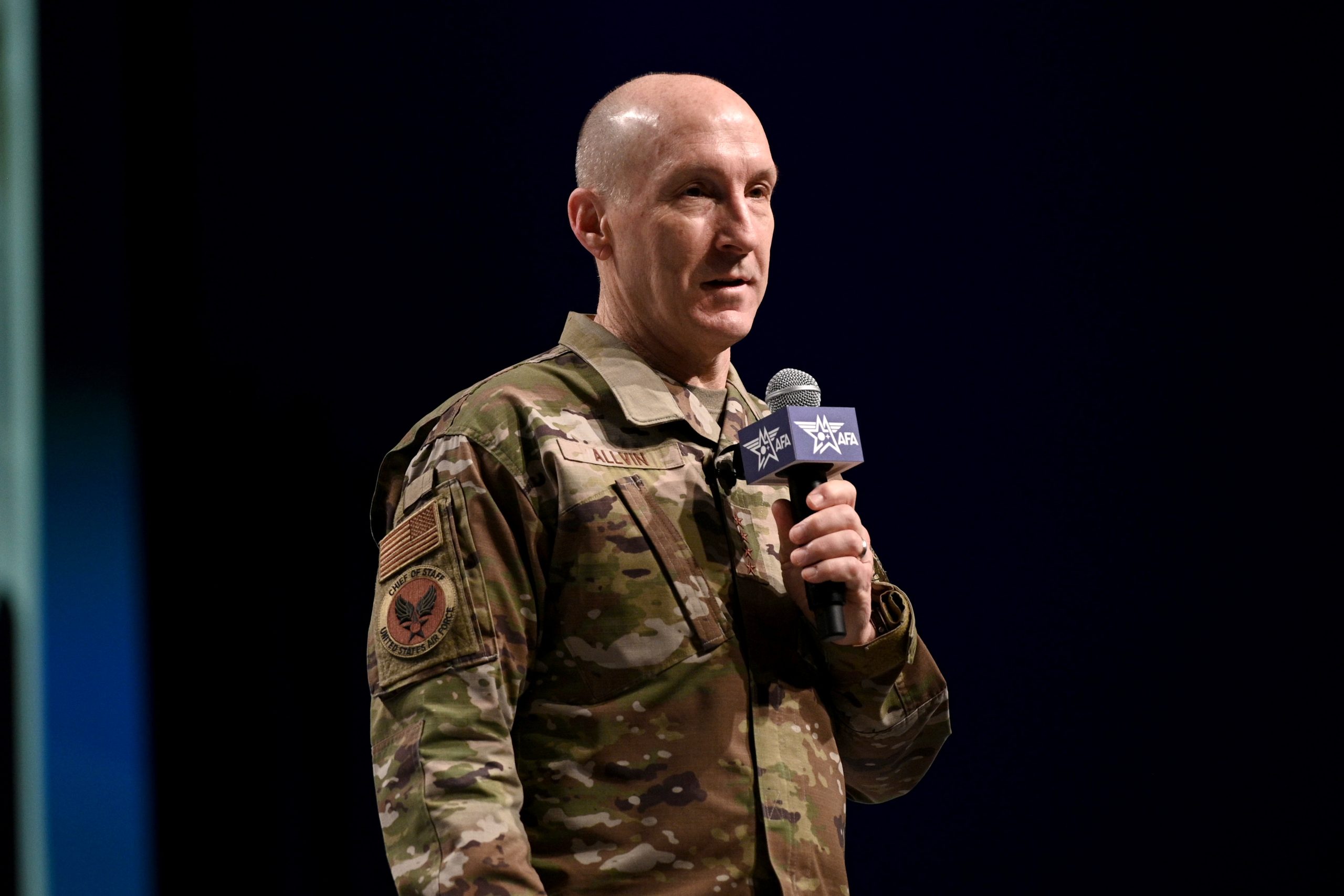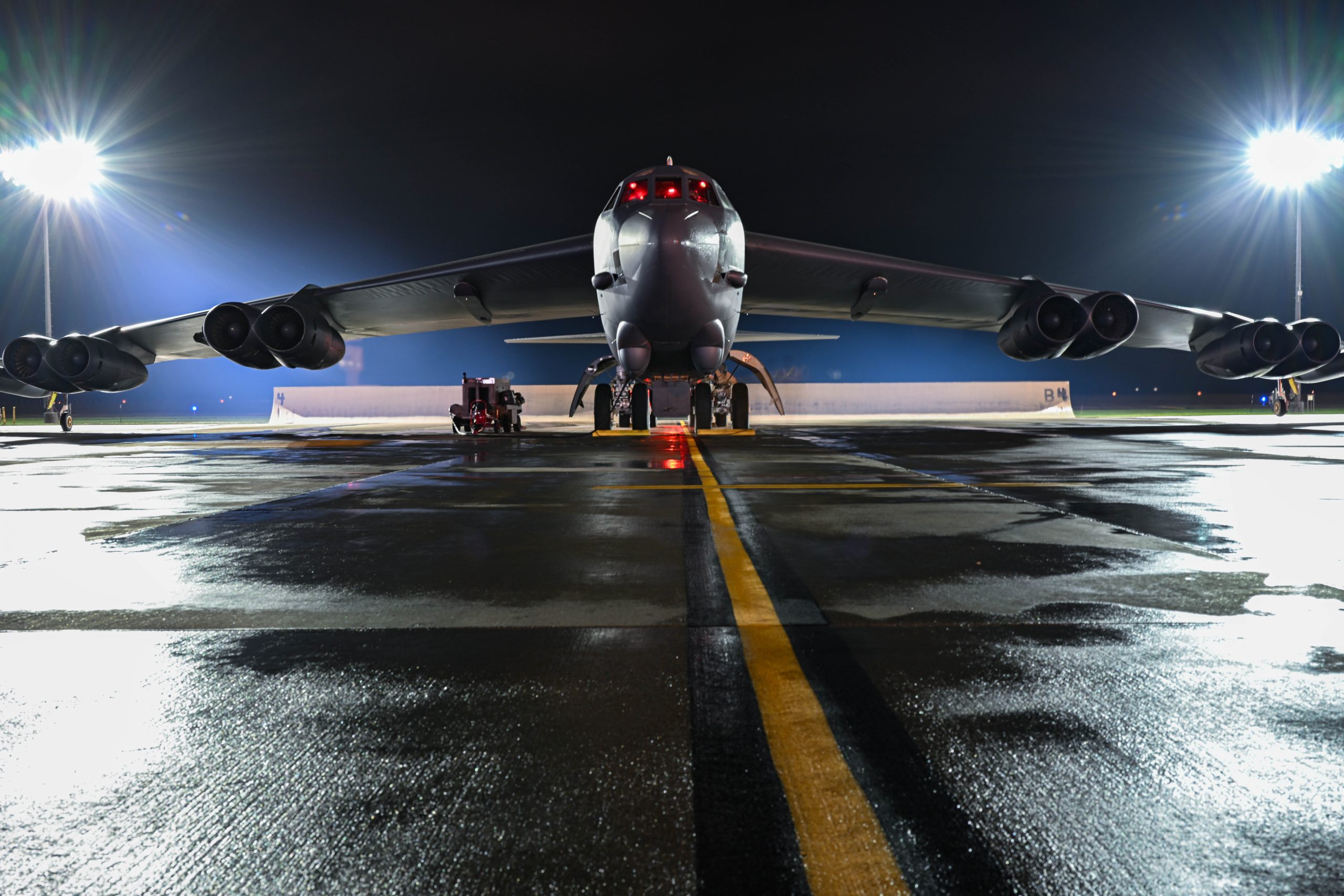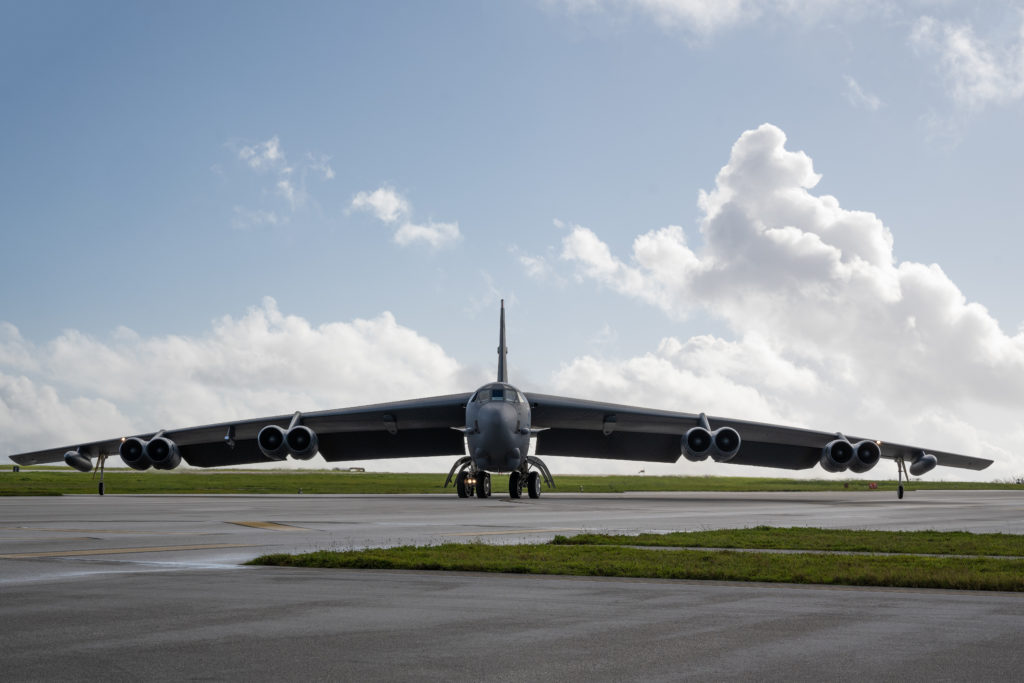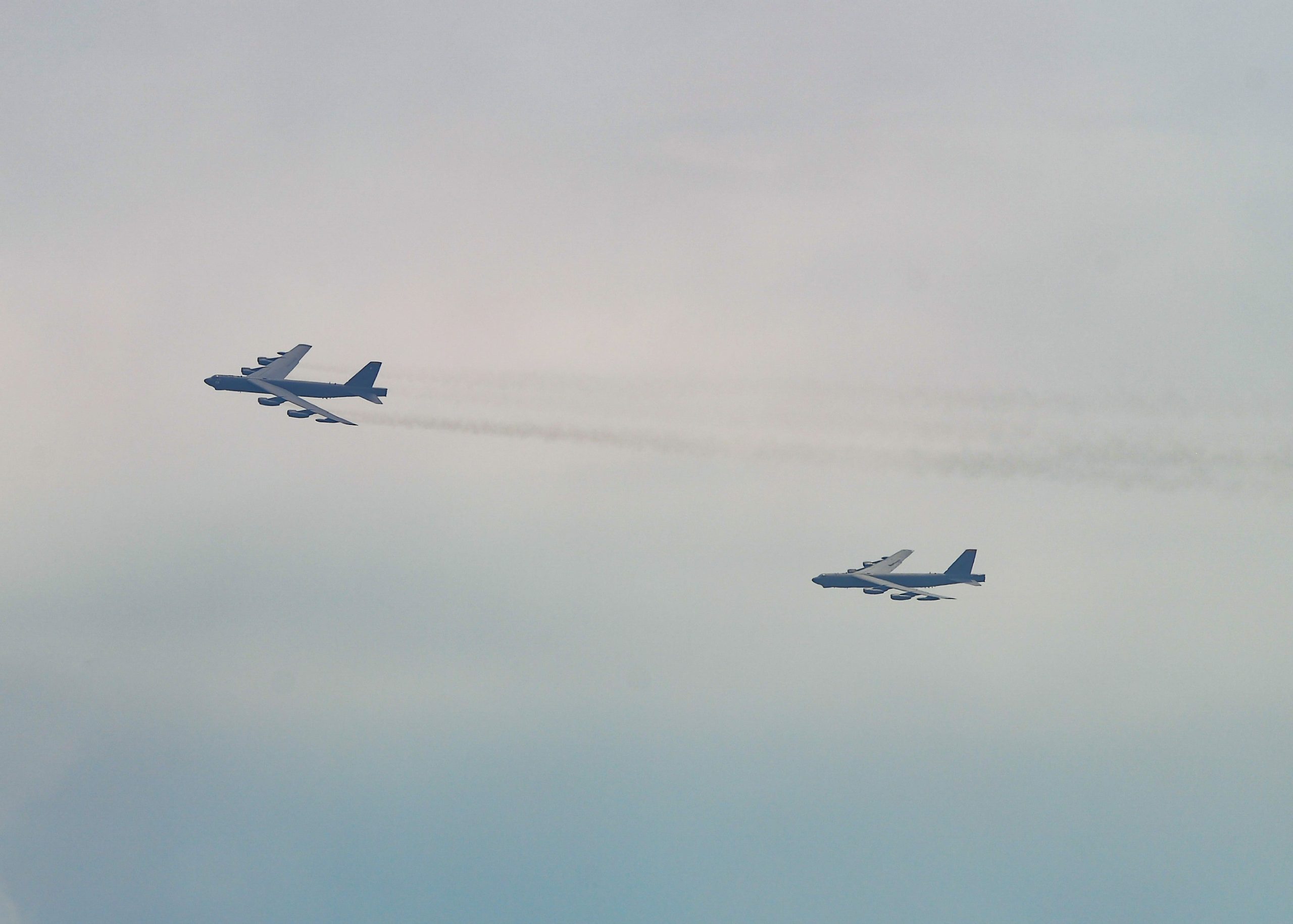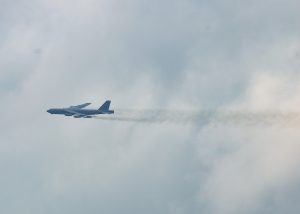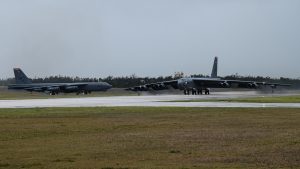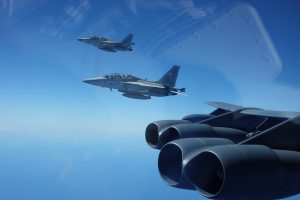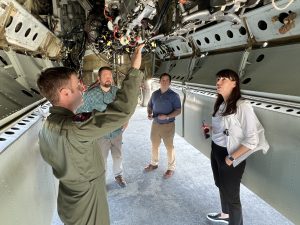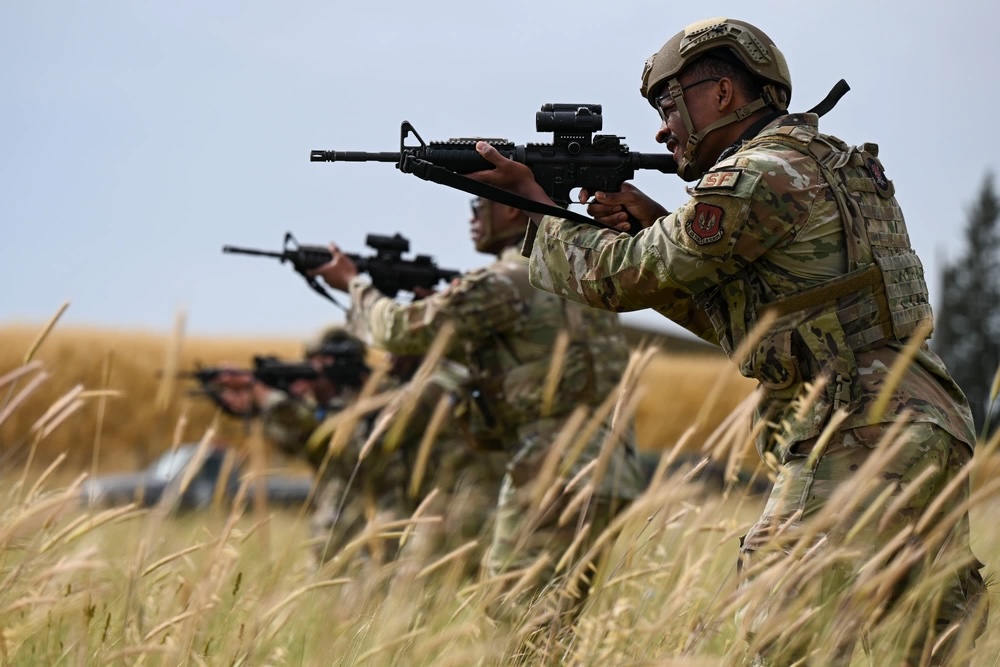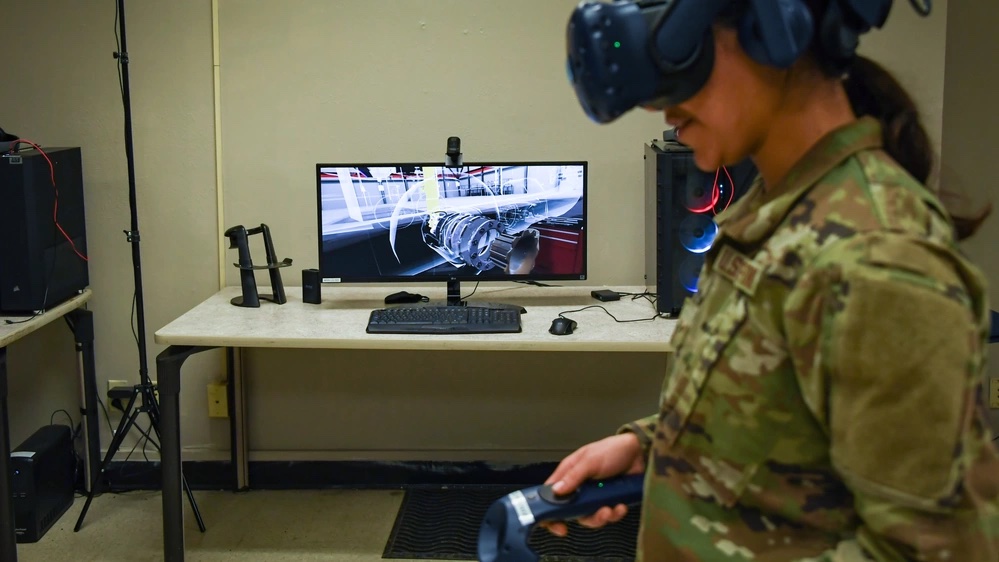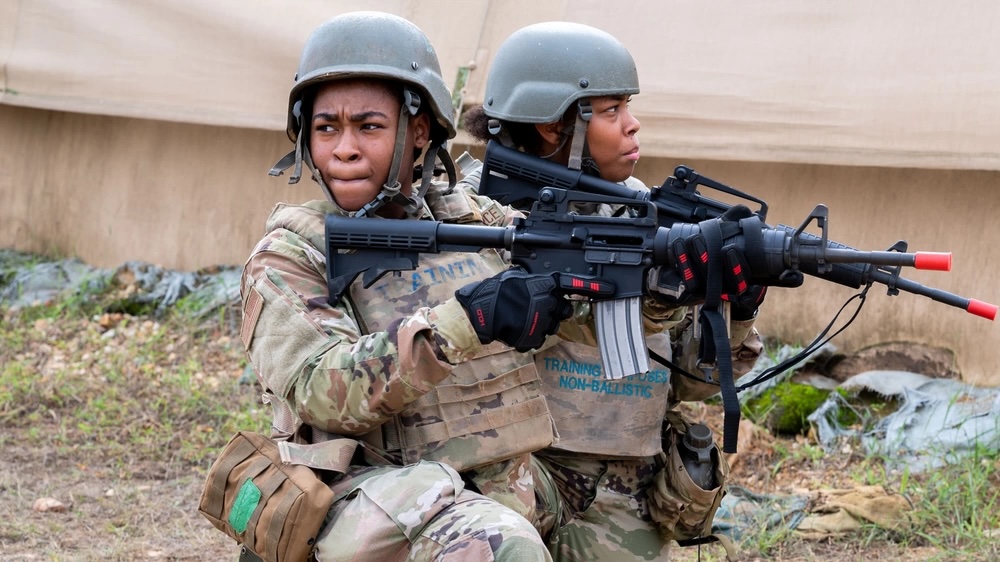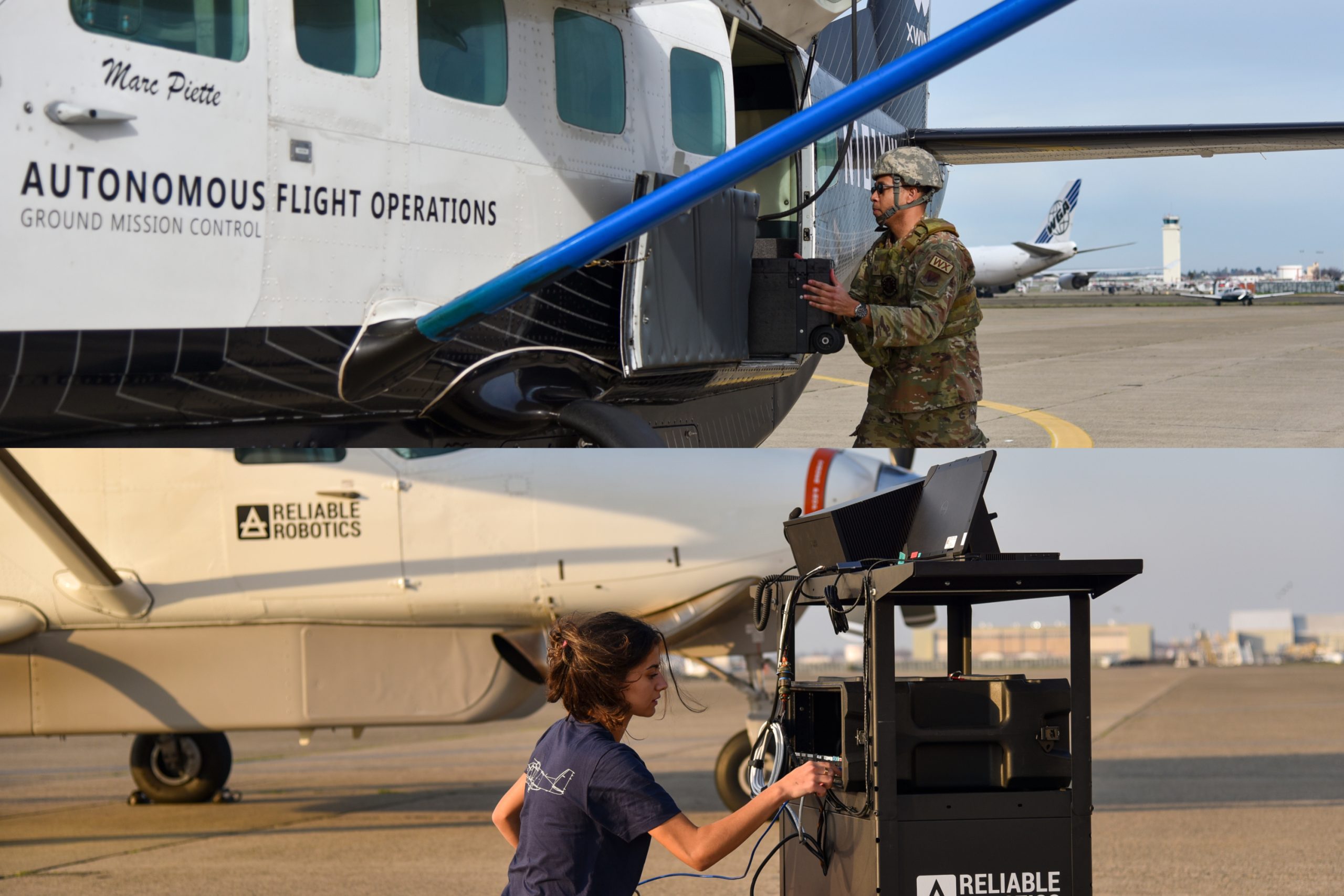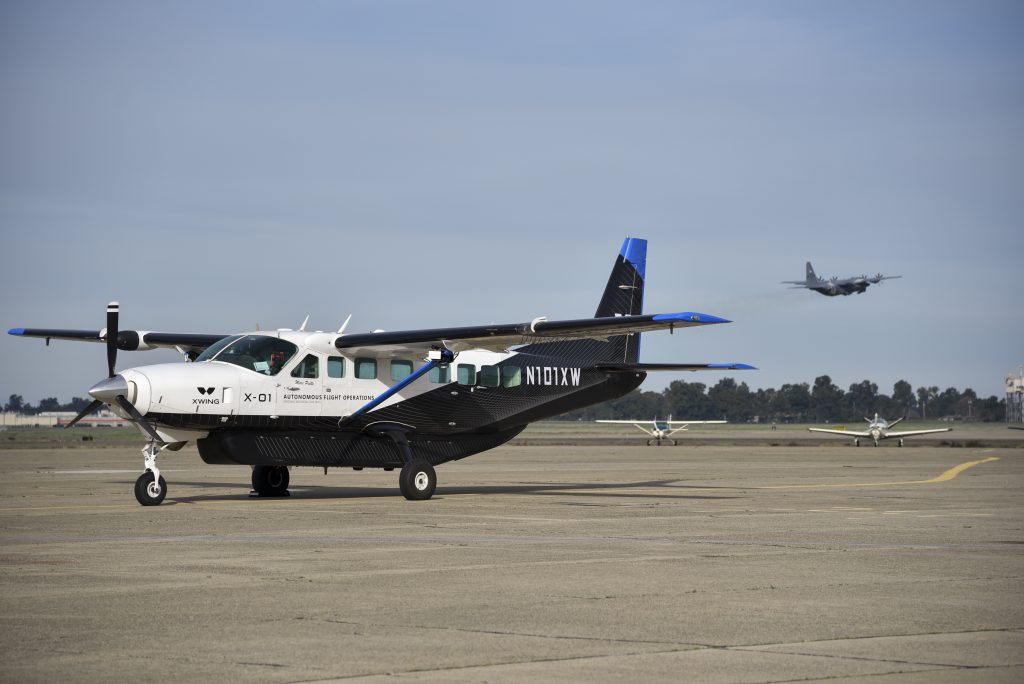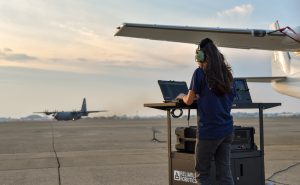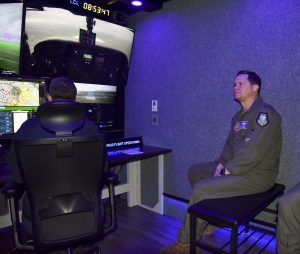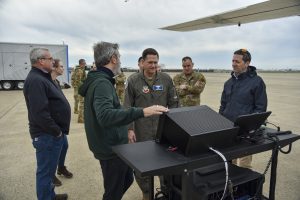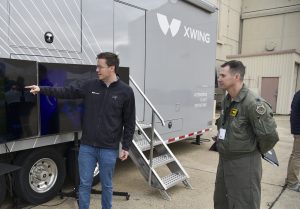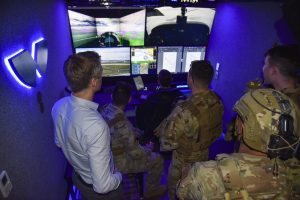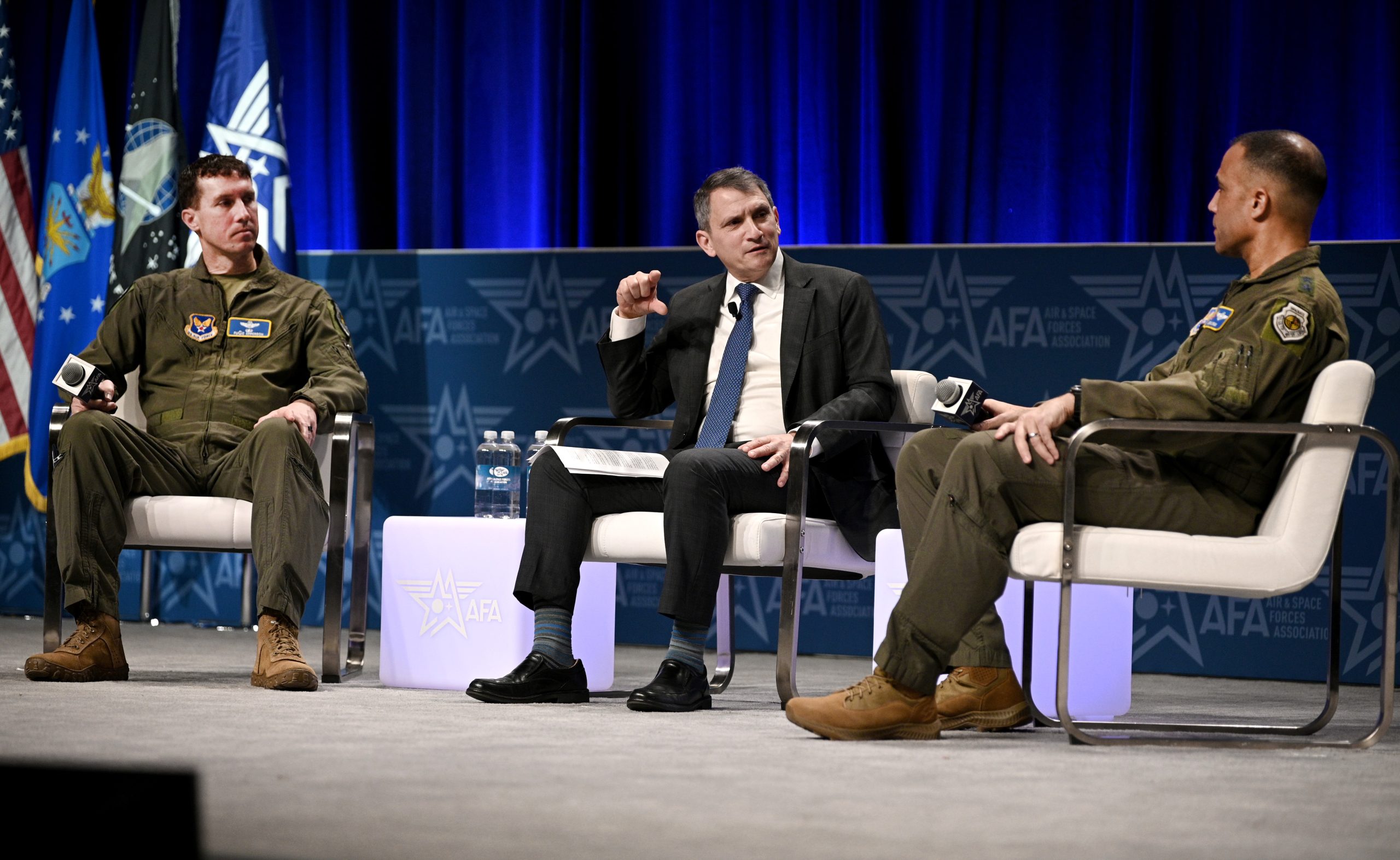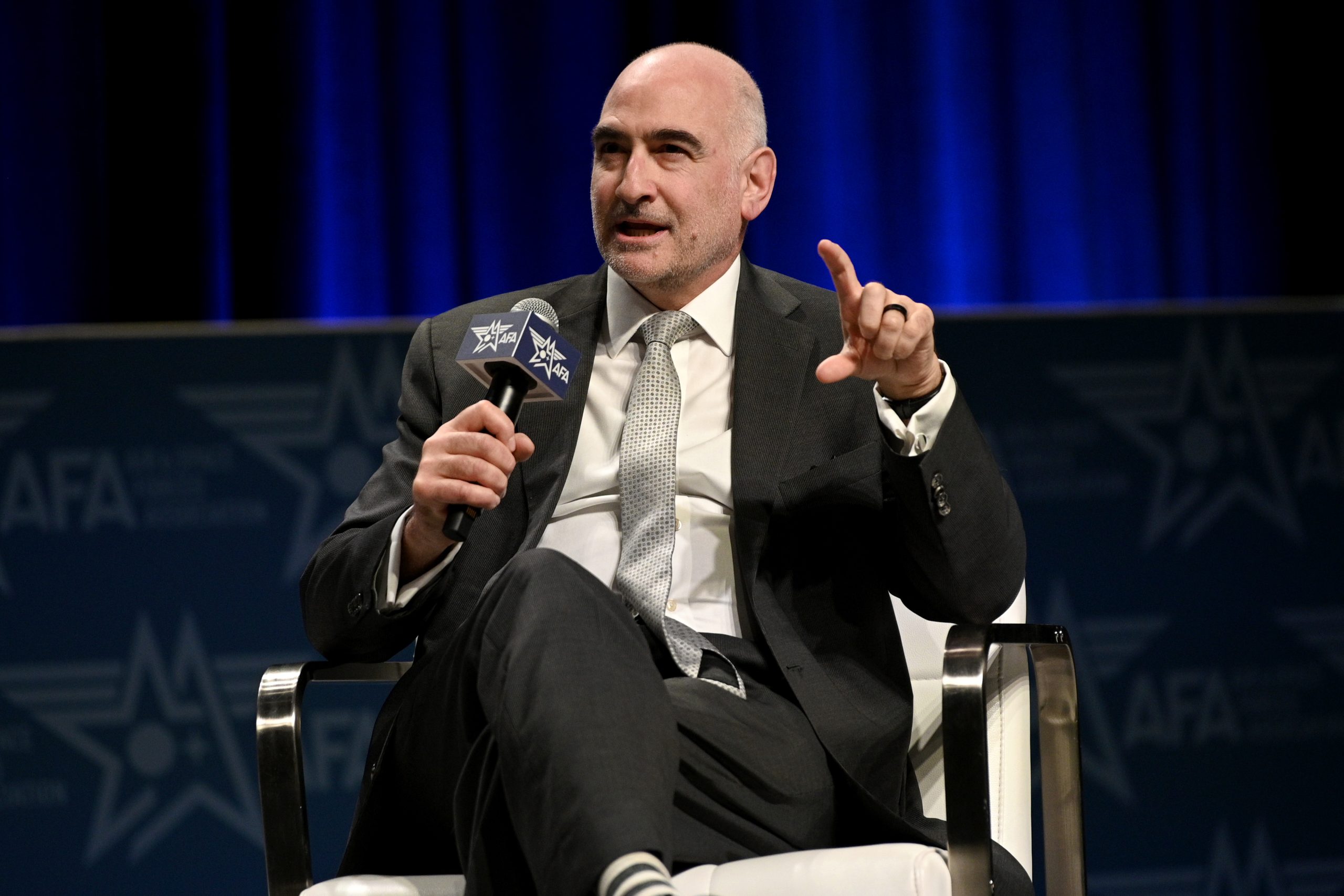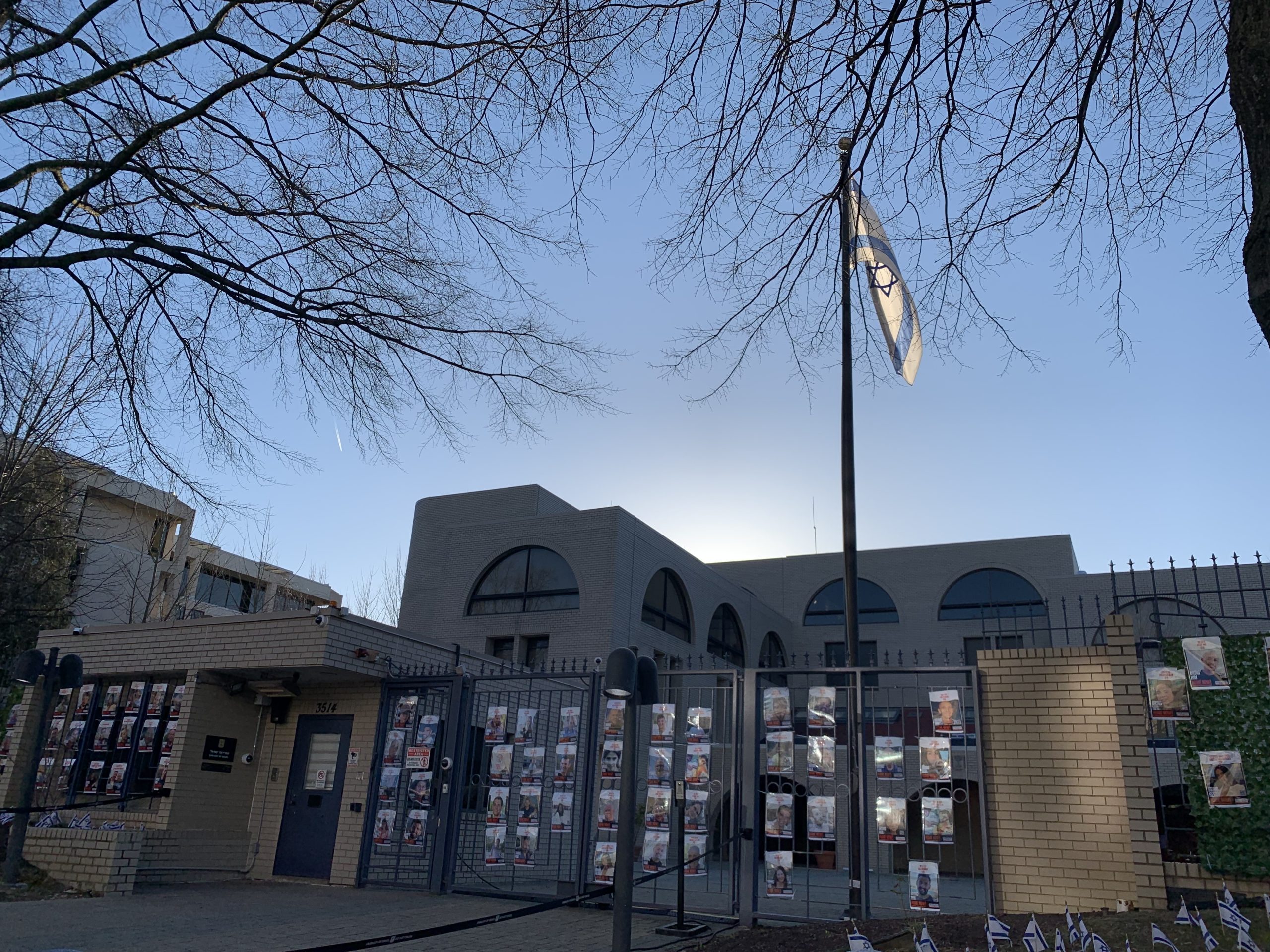Gen. David W. Allvin, Chief of Staff of the U.S. Air Force, spoke about the State of the Air Force and a fundamental shift in airpower at the AFA Warfare Symposium on Feb. 12, 2024. Watch the video or read the transcript below, made possible through the sponsorship of Schneider Electric.

Maj. Gen. Doug Raaberg, USAF (Ret.):
Our next keynote speaker is a proven leader who embodies the integrity of the Air Force. General Dave Allvin’s experience as a test pilot in over 30 aircraft and leadership roles on the air and joint staffs in Europe, the Middle East, and the Pentagon undoubtedly position him as the right leader to lead our Airmen across the globe.
General Allvin stepped into the seat of chief of staff of the Air Force with a very clear vision. Now is the time that we follow through and turn initiatives into results. Ladies and gentlemen, I would like to welcome to the stage your 23rd Chief of Staff of the United States Air Force General, Dave Allvin.
Gen. David W. Allvin:
Well, good morning. We’re back again today, and it is a great day. Thanks again to the entire AFA team for making this possible. This is a fantastic symposium. Everyone seems to get better. I’d like to echo thanks to our secretary, Secretary Kendall, who has truly made One Team One Fight a reality, and to my battle buddy Chance Saltzman. Salty knows his business, right?
That guy knows his business, and I couldn’t have a better partner to be able to make the two services one department work for our nation. So you see that on the slide there it says, “The State of the Air Force,” and that’s what the block is. I feel like we talked about that a little bit yesterday on what we’re going to do.
What I’d like to spend a few moments today, if you’ll indulge me, is to really take stock of where we are in history and give you a few thoughts about where I believe we are and why we have that sense of urgency and a sense of commitment to follow through. Since the dawn of air power, our proud heritage in history has been intertwined with key events in combat that have shaped a battle, eventually a nation, in some cases, the world.
Those are seminal events, and those seminal events get the headlines in history. They are studied. They are celebrated. They are learned from. But to me, what’s almost, and in some cases more important, are the times that preceded them. These are times of consequence in my mind. These are times when Airmen and air pioneers, they embodied what is running through our DNA, which is the spirit of innovation, vision, and courage.
And the action of those Airmen in that time of consequence shaped those seminal events. April 18th, 1942. Lieutenant Colonel Jimmy Doolittle stands on the deck of the USS Hornet with 16 B-25s crouched and a brave cadre of crew ready to undertake one of the most audacious missions in history 132 days after Pearl Harbor was attacked and Imperial Japan felt as though they could conduct this war at a distance and have the United States in a defensive crouch.
The idea here was to flip the script and to show that we could project power and a war that perhaps thought could be fought at a distance could be brought right to their doorstep. This was a seminal event in history, but to me, as interesting was the time of consequence that preceded it. Air pioneers like Eugene Ely in 1911 who took his Curtiss push-plane and landed it [inaudible 00:04:14] of the USS Pennsylvania.
It wasn’t quite combat relevant at the time, but the very fact that it was demonstrated you could put an aircraft on a ship sparked the imagination of those who followed, the vision of what could be. In the 1920s and the 1930s, members of the Air Corps Tactical School sought to draw lessons from air power theorists like Mitchell and Douhet and apply concepts to them to build out what would be the next invention of air power and its integration into warfare.
Central to this was long-range strategic bombing. And the long-range bomber that was a central part of that needed a demand signal, and that demand signal was sent to industry through these innovative Airmen with the ideas to take a concept and put it into action. Industry responded and built the long-range bombers of World War II, including those that were sitting on the deck of the USS Hornet in April of 1942.
It was air power visionaries like Charles Green who was a part of the Doolittle Raid. And as they were preparing for it, realized that the bombsight, the center bombsight, was not going to be suitable to the task. Sorry, I keep… He had an engineering background. He developed the Mark Twain bombsight, one that was accurate below 1,500 feet and suitable to the task.
Airmen like these, visionaries like these ahead of time took what would’ve been seen as maybe a foolhardy plan and made it something that seemed worth trying. And because it was worth trying, they did it and it succeeded. And I’m not saying that was decisive in the war, but had that not happened, had that not been planned and executed, perhaps Admiral Yamamoto might have not been pressed into action earlier than he wanted to to have the Battle of Midway in which he was defeated and the tide of the war was changed.
And perhaps the ultimate outcome of the war in the Pacific would not have been changed, but perhaps it wouldn’t have been able to end like this. He said trying to… Victory could have been achieved, but it might have taken thousands more lives, much more blood and treasure. So that seminal event was made possible by the time of consequence that preceded it.
Six years after the Doolittle Raid, after the surrender of Japan and fascism and Nazism had been defeated on the battlefields of Europe, the Allies had won a victory, but another ideological struggle was on the horizon with deteriorating relationship between the Soviet Union and the US. And that took shape and had a flashpoint in the city of Berlin in which the deteriorating conditions of East Berlin were in stark contrast to a reinvigorating burgeoning West Berlin.
Counter to the narrative that the Soviet Union decided this could not stand and they decided to blockade all access through land and water to the city of Berlin in an attempt to squeeze the city and force the Allies to abandon it, the small isolated city in the middle of a Soviet East Germany. Our response was Operation Vittles, the Berlin Airlift, another audacious plan.
The idea that you could resupply a city, keep a city alive from the air was unthinkable to many, yet we did it. 324 days, 198,000 sorties, 3.2 million tons of food, fuel, supplies, and hope. And the Soviet Union abandoned their plan and the blockade was broken. We did it for three more months just for good measure to show we could continue it and to reinforce the city of Berlin in case the Soviet Union changed their mind.
This was a seminal event. This was a bold, audacious plan, but it was the time of consequence that preceded it that mattered. Experimentation in the ’20s with carrying mail. And yes, when FDR after the mail scandal pressed the Army Air Corps into action in 1934 to carry the mail, and frankly, they failed, Airmen didn’t walk away. They doubled down. They learned from it. Introspection. They developed better equipment.
They developed better training procedures to fly in instruments in weather, and they learned from that. That was a time of consequence. People like Major General Hugh Knerr, who saw that air mobility was a developing part of air power, but he also saw that we were being held back, trapped in the paradigms of the past when he saw that the resupply of the Army Air Corps was limited to the trains and the rail and the trucks.
And he said, “An Air Force that is tied to railheads and it was dependent upon the services of motorized vehicle has the mobility of the truck and the train.” And he realized we were being held back for the potential of air power, that the potential that could bring supplies from the point of origin to the point of need directly.
And he called for air transportation groups and press the War Department and advance air mobility to a greater place in the panoply of air power. But for visionaries like him, might’ve been different. We also continue to learn lessons when we’re flying the Hump, some of the most demanding and dangerous flying that happened, and it was over the China-Burma-India Theater.
From there we learned lessons about our aircraft, about our air crew trying to generate velocity in a difficult environment. And those lessons were learned and adapted to in a gentleman by the name of General Tunner, William Tunner, who took over the Berlin Airlift after LeMay and Smith initiated it, but he took those lessons he learned from flying the Hump and developed those innovations that would make that Berlin Airlift possible.
Understanding about air crew limitations with hypoxia and cumulative fatigue and managing the crew rest and the time cycles within which you could fly before you needed to take a long-term rest from the cumulative fatigue. Understanding the new ways of doing maintenance, innovations like the production line maintenance where you just didn’t fly the aircraft until it broke.
You flew it, and after a period of time you did a tip-to-tail review to make sure the airplane was ready to go. You could keep the entire fleet healthier that way. Understanding that to have velocity, you needed to keep those planes and the crews in the air as much as possible. So ideas like food trucks, the roach coaches that we now affectionately call them. Why?
You wanted to keep those planes in the air, so you didn’t want to have the pilot to go find something to eat or the crew to go somewhere else. You bring the food to them because you need a velocity. What does that result in? That results in every 90 seconds an aircraft taking off. These are the innovations in the time of consequence that actually made this seminal event possible.
I’m going to give you one last example, it’s because I got to experience part of this seminal event in history. It’s late 1980s, 1989 to be exact, and I’m a single lieutenant on flight pay in Europe. Life’s good. All I’m thinking about is flying my mission and not much else. Well, it was a Thursday night and I lived in the loft of the house of a lovely German couple. And of course, there wasn’t a lot of streaming entertainment then, and I had about all the Armed Forces Network that I could handle.
So I was reading a book. And as I was reading, I heard something outside. And so I go to the attic window. I open it up and I look in the street of a tiny town called Hauptstuhl where I lived. And I saw there was a gathering there. It seemed like a celebration. I thought, is this a birthday? Is this a birthday? Is this a family celebration? I didn’t exactly know what it was, until I turned on the TV and this is what I saw.
This is the Brandenburg Gate. This is the fall of the Berlin Wall. I was just a young lieutenant, but I knew right then the world was changing. And in the days that followed, I saw this emergence of hope and just sheer joy and optimism for the future. Cars along the Autobahn going east to west littered with cheap old cars from East Germany because those people were getting out.
They didn’t know if it was going to last and they wanted get out while they could. This thirst for freedom that they finally saw. It was an amazing time in history. It was an amazing time in history, and I will never forget that for as long as I live. The fall of the Berlin Wall was a seminal event. But what made that possible? Did air power contribute to it? You’re damn right it did. This is how we did it.
This was relentless readiness, a demonstration that yes, in the backdrop of the Cold War, the strategic deterrents that underpinned it, our Airmen were ready to meet the challenge. Yes, we could get the aircraft airborne and preserve second strike opportunity. The foundation of deterrents day in and day out we proved that. And for whatever the Soviet Union and their other adversaries may wanted see from above ground, they had to know that the same was happening underneath.
That we had Airmen who were trained, constantly ready 24/7 to do the unthinkable if it was asked of them. That commitment, that sheer will, relentless will, that’s what our Airmen did in this time of consequence. Oh, by the way, let’s not forget, they’re doing it today right now in the missile fields and in those silos with all the support. They’re doing that right now.
Our Airmen haven’t stopped. That sent a message. That was a time of consequence. We also had visionary Airmen like Moody Suter, Bill Kirk, Chuck Horner, who saw that the numerical advantage that the Soviet Union had in conventional forces, including air power, would be a challenge and we needed to have the quality and the training to ensure that we could overcome that.
They were compelled by the logic of the analysis that showed through Vietnam that if the pilots could survive and have success in the first 10 missions than their entire combat tour, they’re much more likely to survive and have an effective combat tour. It was those first 10 missions that were the high risk. So they set about developing an environment in which you could most closely simulate that stress.
They developed the pilots that they trained in enemy tactics who were good at it as well, that who could simulate that environment, that stress, who had the painstaking brief and fly an often painful debrief that helped sharpen them so they could learn those lessons in the flight room and not after a post-shoot-down pickup, or even worse, at the funeral of a wingman.
And from that, the Aggressors were born. From that, Red Flag was born. And to this day, 49 years later, Red Flag is the gold standard for readiness and proficiency to dominate in aerial combat. These were the times of consequence in which Airmen stepped up with the vision, with the innovation, and with the courage to make those seminal events happen. Times of consequence are important, hence the name.
So what’s our next seminal event? I don’t know, but I do know that right now we are also in a time of consequence. What we do now matters. So what are our Airmen doing now? Our Airmen today are doing everything the nation is asking it to. Our Airmen are out there supporting our partner in Europe who is fighting an existential battle against naked aggression. Our Airmen are out there supporting our ally in the Middle East who is fighting terrorism within their own borders.
Our Airmen are out there in harm’s way to help tamp down violence in the Middle East in general. They’re helping support the continued free movement of goods across the waterways. They’re on the peninsula of Korea defending forward. They are deterring. They are building alliances in the Pacific. They are doing everything we’re asking of them, to include what I mentioned before, in the silos, in the missile field showing that we’ll do everything the nation asked us to do.
And frankly, the Air Force is busy. The nation is asking us to do a lot. Because when it comes to our Air Force, in the words of the indomitable David Lee Roth from Van Halen, everybody wants some. And I realized as I said that, there’s a crowd that gets that, but that song was probably… That album was probably cut about 45 years ago in which most of our Airmen weren’t even born, much less of the listening age. But look it up. It’s a classic. Everybody wants some.
We’re spread thin, and that’s a fact. And it’s starting to show. It’s starting to show a little bit in the readiness of our aircraft. It’s starting to show a little bit in the state of our infrastructure. It’s starting to show, and we have work to do there. But let me tell you, you wouldn’t know it by the performance of our Airmen. You wouldn’t know it. They are performing admirably because they know they’re part of a winning team with the right cause.
We should never take that for granted. That is amazing. That is what makes us the Air Force that we are, and we owe it to them to continue to improve on those areas to make their jobs a little bit easier. It’s a tough job. Nobody does it better. But here’s what else they’re doing. Our Airmen are doing something that will make us proud in the future, that they are carrying on the legacy of innovative spirit, of vision, of courage.
Our Airmen are sorting out Agile Combat Employment from the bottom up. They are out there from Alaska, in the Indo-Pacific, in the Middle East, wherever they are, understanding the tenets of Agile Combat Employment, how it might apply in their theater. They’re doing it from the bottom up. They’re figuring out how to lighten our footprint, how to increase our velocity of sortie generation.
Those things that we know are going to be required as a change in character of war is coming upon us and the theater of war is going to require us to fight differently. They’re doing that. They’re also embracing what is the future of our Air Force, which is the integration human-machine teaming. This will be the part of the reinvention of our Air Force and air power into the future. Our Airmen are gripping it.
And I will tell you, it’s not only gripping it in the manner of how we employ them, how we use them to the best effect in combat, but with the standup of our experimental operations unit, our Airmen are understanding not only how to employ it, we’re experimenting how to deploy it, how to maintain it, how to train with it, how to integrate it into our Air Force.
Almost as though they’re listening to the echoes of Major General Knerr who said, “Do not get trapped in the paradigms of the past.” Don’t find the easy answer and say, “Oh, it looks like ah, so let’s just treat it like ah.” Whatever it is, we need to understand this is a unique capability, unique opportunity for us to understand how to best employ, deploy, and integrate this into the next invention of the Air Force.
They also understand that the future is about ones and zeros as well. It is about an Air Force that it is based on systems surrounded by platforms, rather than platforms upon which we hang systems, because those systems as the core of our Air Force going into the future can be adapted more readily, can be updated, upgraded, and be able to be fit for the environment that we find ourselves, an environment that changes rapidly.
Our Airmen understand this. It’s about the symbiotic relationship between the data and the decision maker, between the ones and zeros and the warrior. This is the future. This is the reinvention of our Air Force and our Airmen are gripping it. We’re also not ignoring what’s happening underneath our noses right now. Some of the changes are being played out in combat.
Our Airmen are looking at that, and you can see it in pockets across our Air Force, whether it be in Spark Cells or within our components. They’re looking at what’s happening, the crackling of life that’s happening in the electromagnetic spectrum that have been largely taken for granted, the asymmetric advantages that can happen with low-cost solutions. That may not be enduring, but they’re enough to get you an advantage today.
How do we integrate that and agilely adapt and update for those very things that do not always have to be the next high-cost exquisite solution? These Airmen are doing all of this, and this is why we should be so proud that they’re upholding the legacy of air power. And we’re ensuring that we will continue to reinvent ourselves into the future to be the most dominant Air Force in the world.
That’s what our Airmen are doing. In closing, I just want to say this is a picture that when I go into my office every day, it’s in the back of my office, it’s the first thing I see. And it’s not just because it’s a C-46 flying the Hump, but there’s a metaphor here. I don’t know what the next seminal event will be, but I know there’s going to be one. They’re unpredictable, but they’re inevitable.
And I know that what we do now in our time of consequence, which is now, will impact that. We need to own that. This is our time of consequence. What we do, the decisions we make, the actions we take, the Airmen we lead, and the way we do it will define that next seminal event. As the picture shows, it’s unclear. There’s danger ahead. There are obstacles to navigate, but we will not turn away.
We will lean into them. In this time of consequence, we have to have the courage to make the hard decisions, the conviction to follow through with those decisions. That’s an obligation to our Airmen and it’s an obligation to our nation. The stakes are high and the time is now. Thank you very much.
